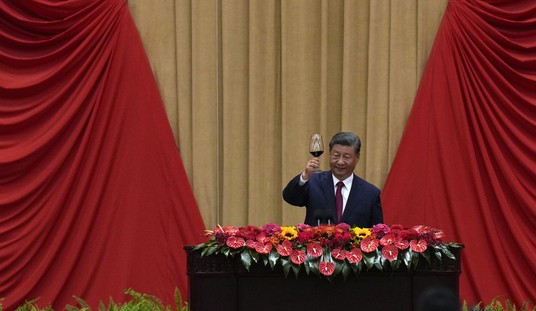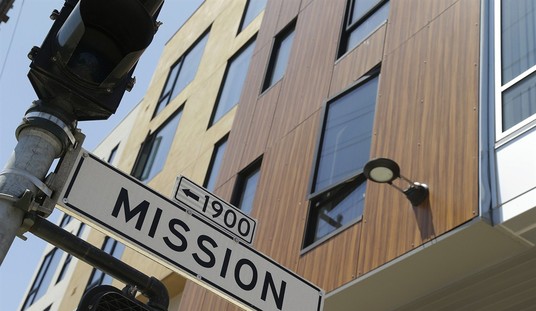Thus far, warnings of collapse in the jobs market due to the end of government supports have failed to come true. In August, the US economy added 1.4 million jobs and the unemployment rate dropped from 10.2% to 8.4%. The numbers of unemployed people in the short- and mid-term dropped substantially, while furloughs decreased massively. The latter might not be an entirely positive signal, however:
Total nonfarm payroll employment rose by 1.4 million in August, and the unemployment rate fell to 8.4 percent, the U.S. Bureau of Labor Statistics reported today. These improvements in the labor market reflect the continued resumption of economic activity that had been curtailed due to the coronavirus (COVID-19) pandemic and efforts to contain it. In August, an increase in government employment largely reflected temporary hiring for the 2020 Census. Notable job gains also occurred in retail trade, in professional and business services, in leisure and hospitality, and in education and health services. …
In August, the unemployment rate declined by 1.8 percentage points to 8.4 percent, and the number of unemployed persons fell by 2.8 million to 13.6 million. Both measures have declined for 4 consecutive months but are higher than in February, by 4.9 percentage points and 7.8 million, respectively.
The profile of jobs changed significantly with the end of furloughing for millions of Americans, but permanent job losses jumped by slightly over a half-million:
Among the unemployed, the number of persons on temporary layoff decreased by 3.1 million in August to 6.2 million, down considerably from the series high of 18.1 million in April. In August, the number of permanent job losers increased by 534,000 to 3.4 million; this measure has risen by 2.1 million since February. The number of unemployed reentrants to the labor force declined by 263,000 to 2.1 million. (Reentrants are persons who previously worked but were not in the labor force prior to beginning their job search.) (See table A-11.)
The number of unemployed persons who were jobless less than 5 weeks decreased by 921,000 to 2.3 million in August, and the number of persons jobless 5 to 14 weeks fell by 2.0 million to 3.1 million. The long-term unemployed (those jobless for 27 weeks or more) numbered 1.6 million, little changed over the month. (See table A-12.)
Part-time work for economic reasons declined by nearly a million people. That indicates a still-growing demand to move employees back to full-time work. And this seems particularly encouraging:
The labor force participation rate increased by 0.3 percentage point to 61.7 percent in August but is 1.7 percentage points below its February level. Total employment, as measured by the household survey, rose by 3.8 million in August to 147.3 million. The employment-population ratio rose by 1.4 percentage points to 56.5 percent but is 4.6 percentage points lower than in February. (See table A-1.)
In August, the number of persons who usually work full time rose by 2.8 million to 122.4 million, and the number who usually work part time increased by 991,000 to 25.0 million. Part-time workers accounted for about one-fourth of the over-the-month employment gain.
Interestingly, the data on wages shows growth there as well — a bit of a surprise, given the huge overhang of sidelined labor still in the market. Overall wages rose 11 cents an hour, and private-sector non-supervisory wages rose 18 cents an hour. The overall increase is an annualized 4.4% pace of growth. The BLS notes that the chaotic nature of the jobs markets make it difficult to track wage growth reliably, but the increase in wages tends to indicate that employers might have more demand for labor than labor has for employers — another positive sign.
Another positive sign comes in the labor force numbers. The big drop in the U-3 unemployment rate suggested that the denominator — the size of the labor force — might have shrunk. Instead, almost a million workers entered the labor force in August, and the size of the “not in labor force” pool shrunk by nearly 800,000 in the Household survey. That same survey showed 3.7 million more Americans identified as “employed” than in July, too, although the official jobs-added numbers come from the Establishment survey (as usual).
Speaking of which, the latter survey shows that 344,000 of the new jobs came in the government sector, accounting for a quarter or so of the growth in August. About two-thirds of those are Census workers, but 100K or so come from other agencies. That could indicate that state and local governments have begun to ramp up operations again, which might end up undercutting Democrats’ arguments for the Phase 4 aid bill that has gotten stuck in Congress.
Otherwise, almost all of the private-sector growth took place in the service sector, with retail the biggest winner in adding nearly a quarter-million jobs last month. That shows both the effects of reopening and the need to meet increasing consumer demand, both good signs for a rebounding economy.
Don’t expect to get that take from the media, however. This is how ABC News reported the topline numbers:
U.S. employers added 1.4 million jobs last month and the unemployment rate fell slightly to 8.4%, the Bureau of Labor Statistics says in its latest employment report. https://t.co/dKzHkTT5C6
— ABC News (@ABC) September 4, 2020
“Slightly”?? The unemployment rate dropped 1.8 points from 10.2% to 8.4%, which is a large drop, especially in this series of measures. It’s impossible to miss this in the report, as the excerpt at the top shows. I’d chalk that up to ignorance among headline writers, except that ABC did the exact same thing last month when the rate dropped by a full point.
Count on the Strib to provide a glass-half-full take too:
The U.S. unemployment rate fell sharply in August to 8.4% from 10.2% even as hiring slowed, with employers adding the fewest jobs since the pandemic began. https://t.co/qDuQ0R4iy5
— Star Tribune (@StarTribune) September 4, 2020
Hiring may have “slowed,” but that’s akin to noting a slight rate change in Niagara Falls’ water speed. In a recovery like this, the pent-up demand will create a massive return at first, and then progressively lower amplitudes as the ranks of the sidelined workers falls. There’s nothing at all slow about adding 1.4 million jobs in a month, and it’s silly to put it in those terms.
CNBC provided a more honest assessment:
Nonfarm payrolls increased by 1.37 million in August and the unemployment rate tumbled to 8.4% as the U.S. economy continued to climb its way out of the pandemic downturn.
The unemployment rate was by far the lowest since the coronavirus shutdown in March, according to Labor Department figures released Friday. An alternative measure that includes discouraged workers and those holding part-time jobs for economic reasons also fell, down to 14.2% from 16.5% in July and 22.8% at the peak in April.
Economists surveyed by Dow Jones had been expecting growth of 1.32 million and the jobless rate to decline to 9.8% from 10.2% in July. …
Average hourly earnings rose 4.7% from a year ago, though comparisons are difficult due to compositional effects from the pandemic.
All in all, it’s a fantastic report — especially given the predictions of collapse when the CARES Act expired. There may still be some need for targeted stimulus, but it’s become clear that we do not need broad-based helicopter cash to keep the economy on track now. What we need is broad-based support for getting the rest of America reopened.
Update: Steve Liesman does a good job as well:
CNBC’s Steve Liesman: “a lot more people came back to the workforce and a lot of them found jobs” pic.twitter.com/RPs8UAI1P3
— Steve Guest (@SteveGuest) September 4, 2020








Join the conversation as a VIP Member